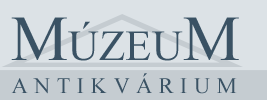categories
- Traffic and Vehicles Catalogue
- socreal.catalog
- Advertisement Catalogue
- Photo Catalogue
- Chinese and Japanese Catalogue
- New Holy Card Catalogue II.
- 12 interesting old books
 Books
Books
 Bibliophil
Bibliophil
 Antiques
Antiques
 Engraving
Engraving
 Maps
Maps
 Photos
Photos
 Antique Papers, Small Prints
Antique Papers, Small Prints
 Posters
Posters
- Circus
- Modern Graphics
- Socialist Realism
- NER Propaganda
- Others
cart
Cart is empty
You've not logged in
Impelluso, Lucia : Nature and Its Symbols
- description
- additional information
Translated by Stephen Sartarelli.
Nature and Its Symbols is the fifth volume in the series A Guide to Imagery, reference guides whose goal is to explain the symbols used in art. This volume includes chapters on plants, flowers, fruits, and animals of the earth, air, and water, as well as fantastical creatures such as centaurs, griffons, and dragons. The vivid illustrations, which include paintings and tapestries from some of the world's premier museums, are accompanied by texts that offer a careful analysis of the artists' depictions of the natural world. Each entry discusses the symbolic significance of the particular plant, fruit, or animal portrayed, its mythic or literary origins, and the episodes or individuals associated with it. These salient points are also called out in summary form within each entry, making the information easily accessible. The reader discovers, for example, that the iris can represent Jesus or the purity of the Virgin Mary as well as the kings of France or the city of Florence. The monkey, which can be symbolic of the devil, heresy, or bad temper, is also associated with the three wise men who travelled to Bethlehem to pay homage to the infant Jesus.
Nature and Its Symbols is the fifth volume in the series A Guide to Imagery, reference guides whose goal is to explain the symbols used in art. This volume includes chapters on plants, flowers, fruits, and animals of the earth, air, and water, as well as fantastical creatures such as centaurs, griffons, and dragons. The vivid illustrations, which include paintings and tapestries from some of the world's premier museums, are accompanied by texts that offer a careful analysis of the artists' depictions of the natural world. Each entry discusses the symbolic significance of the particular plant, fruit, or animal portrayed, its mythic or literary origins, and the episodes or individuals associated with it. These salient points are also called out in summary form within each entry, making the information easily accessible. The reader discovers, for example, that the iris can represent Jesus or the purity of the Virgin Mary as well as the kings of France or the city of Florence. The monkey, which can be symbolic of the devil, heresy, or bad temper, is also associated with the three wise men who travelled to Bethlehem to pay homage to the infant Jesus.
| condition: |      |
| category: | Books > Foreign Language Books > Books in English > |
| category: | Books > Arts > |
| category: | Books > Arts > Art history > |
| publisher: | The J. Paul Getty Museum, (2004) |
| item number / ISBN: | 9780892367726 |
| binding: | paperback |
| pages: | 382 |
| language: | English |









 Telefon:
Telefon: E-mail:
E-mail:







